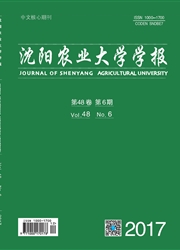

 中文摘要:
中文摘要:
掌握农田土壤水分和养分的空间分布特征是实现农田土壤精确管理及实施精确农业的重要依据。以有限的采样信息为基础,通过多种空间分析理论的融合,形成优势互补的综合方法,对提高土壤变量空间分布模拟和绘图精度具有重要意义。该文将贝叶斯最大熵法(Bayesian maximum entropy,BME)和贝叶斯人工神经网络方法(Bayesian neural networks,BNN)结合形成一种空间插值新方法,即用BNN法表达估值的不确定性,并将其结果融入现代地质统计学BME法中,用融入BNN法结果的BME法(Bayesian maximum entropy method combined with Bayesian neural networks,BMENN)模拟土壤变量的空间分布。以江苏省扬州市区北部某田块的土壤水分、有机质、全氮、碱解氮、速效钾和速效磷6种土壤特性的采样数据为例,运用交叉验证法,将BMENN法对土壤变量的估值精度与BNN法、普通克立格法(ordinary Kriging,OK)进行了比较。结果表明:与OK法和BNN法相比,BMENN法将估计方差(mean squared error,MSE)缩小2.26%~23.54%,具有最小的估计方差和接近于0的平均绝对误差(mean error,ME);BMENN法的估计值与实测值相关系数更大(r=0.62~0.89),具有更高的相关程度;MSE的组成分析表明,BMENN法再现变量波动程度和波动大小的能力更强;从模拟的空间分布图来看,BMENN法绘制的空间分布图更连续,"牛眼"较少,更符合土壤变量的地学规律。BMENN法对于利用有限数据信息提高土壤变量空间分布模拟精度具有重要意义,并可为土壤管理、精准农业的实施以及区域环境规划等提供科学依据。
 英文摘要:
英文摘要:
Understanding spatial distribution characteristics of soil moisture and nutrients is an important step for precision agriculture and site-specific soil management. In order to improve the accuracy of soil spatial prediction, it is of great importance to predict and map soil spatial characteristics based on limited data and develop new methods by integrating different spatial analysis theories. By analyzing the advantages and disadvantages of the Bayesian maximum entropy method (BME) and the Bayesian neural networks (BNN), this study proposed a Bayesian maximum entropy method combined with the Bayesian neural networks (BMENN) to predict the spatial distributions of soil moisture and nutrients in farmlands. The BMENN method takes the following steps: first, the BNN is used to quantify the prediction uncertainties of soil moisture and nutrients at all predicted locations; then, the uncertainties expressed by 95% prediction limits are regarded as soft data of BME method to be interpolated in spatial distributions of soil variables. Six soil variables, including moisture content, organic matter, total nitrogen (N), alkali-hydrolyzable N, available phosphorus (P) and available potassium (K), were measured at 161 locations in agricultural field in the north of Yangzhou City, Jiangsu Province. The locations were selected on the basis of 5 mx5 m regular grid. Based on these soil data, the performance of the BMENN method for spatial prediction of soil moisture and nutrients was compared quantitatively with the BNN method and the ordinary Kriging (OK) using Pearson correlation coefficient (r), mean error (ME) and mean squared error (MSE). The sampling data from the 161 locations for each variable were divided into the calibration data set and the validation data set. The calibration data set was used to build prediction models of all 3 methods. The 3 methods were compared by the cross-validation using the validation data set. The MSE was divided further into 3 components revealing d
 同期刊论文项目
同期刊论文项目
 同项目期刊论文
同项目期刊论文
 期刊信息
期刊信息
